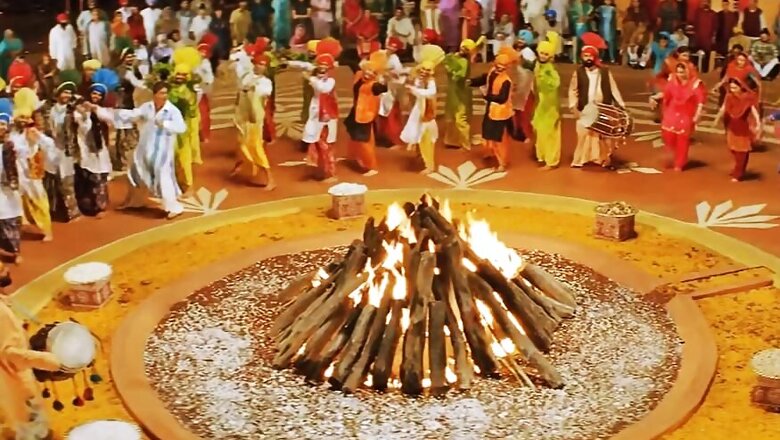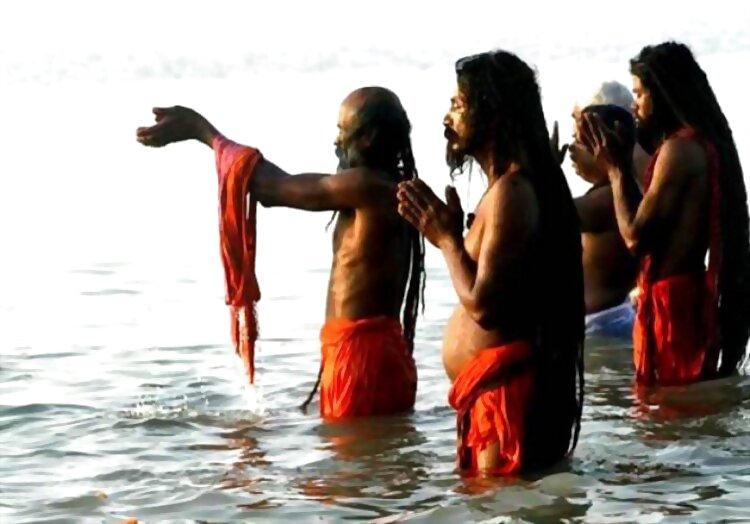
views

Lohri marks the beginning of the end of winter, coming of spring and the new year. The festival is traditionally associated with the harvest of the rabi crops. The traditional time to harvest sugarcane crops is January, therefore, Lohri is seen by some to be a harvest festival. And thus, Punjabi farmers see the day after Lohri (Maghi) as the financial New Year.
There are some interesting socio-cultural and folk-legends connected with Lohri. According to the cultural history of Punjab, Bhatti, a Rajput tribe during the reign of Akbar, inhabited parts of Rajasthan, Punjab, and Gujarat (now in Pakistan). Dulla Bhatti, Raja of Pindi Bhattian, was put to death by the Mughal king for revolting against him. The tribal mirasis (street singers) trace the history of the tribe and interestingly, claim Maharaja Ranjit Singh as one of its scions.
Dulla Bhatti, like Robin Hood, robbed the rich and gave to the poor. The people of the area loved and respected him. He once rescued a girl from kidnappers and adopted her as his daughter. His people would remember their hero every year on Lohri. Groups of children moved from door to door, singing the Dulla Bhatti folk-song: "Dulla Bhatti ho! Dulle ne dhi viyahi ho! Ser shakar pai ho!" (Dulla gave his daughter a kilo of sugar as a marriage gift).

Makar Sankranti also known as Makara Sankranti is celebrated in various parts of the Indian subcontinent to observe the day which marks the shift of the sun into ever-lengthening days. The festival is a seasonal observance as well as a religious celebration.
Though extremely popular as Makar Sankranti, the festival is predominantly a harvest festival and is celebrated throughout India, from north to south and east to west. While Makar Sankranti is most popular in West India, down south, the festival is known as Pongal and in the north, it is celebrated as Lohri. Uttarayan, Maghi, Khichdi are some other names of the same festival.
Makar Sankranti is the festival of til-gul where sesame and jaggery laddoos or chikkis are distributed among all.
The festival Makara Sankranthi is a solar event making it one of the few Hindu festivals which fall on the same date in local calendars every year: 14 January, with some exceptions when the festival is celebrated on 15 January.
Makar Sankranti is believed to be a time for peace and prosperity. The day is regarded as important for spiritual practices and accordingly people take a holy dip in rivers, especially Ganga, Yamuna, Godavari, Krishna and Cauvery. The bathing is believed to wash away sins.
Makar or Makara Sankranti is celebrated in many parts of South Asia with some regional variations. It is known by different names and celebrated with different customs in different parts of the region.

Thai is the first month of the Tamil Almanac, and Pongal is a dish of sweet concoction of rice, moong dal, jaggery and milk. This festival is celebrated by one and all as it is non-relevance to any particular religious faith. The whole Tamil population of the world celebrate it without any differences. Therefore it is widely known as "Tamil Thai Pongal" or the "Festival of the Tamils". It is celebrated on the first day of the month Thai of the Tamil calendar.
The festival is a thanks giving ceremony in which the farmers celebrate the event to thank the spirits of nature spirit, the Sun and the farm animals for their assistance in providing a successful harvest. The rest of the people celebrate the festival to pay their thanks to the farmers for the production of food. Overall, it is a festival to encourage social cohesiveness and unite people by bringing them together in a common function. There are many songs about Thai Pongal and there is much Tamil literature about it.
Thai Pongal generally includes customs & celebrations that are the expression of jubilation over life's renewal. On Thai Pongal, the family begins the day early. The traditional Pongal (rice pudding) is prepared in the front garden which is pre-prepared for this ceremonious cooking. A flat square pitch is made and decorated with kolam drawings, and it is exposed to the direct sun light. A fire wood hearth will be set up using three bricks. The cooking begins by putting a clay pot with water on the hearth.
A senior member of the family conducts the cooking and the rest of the family assists him or her or watches the event. When the water has boiled the rice is put into the pot - after a member the family ceremoniously puts three handful of rice in first. The other ingredients of this special dish are chakkarai (brown cane sugar) or katkandu (sugar candy), milk (cow's milk or coconut milk), roasted green gram (payaru), raisins, cashew nuts and few pods of cardamom. When the meal is ready it is first put on a banana leaf and the family pray for few minutes to thank the nature sprit, the sun and farmers.(Also Read: 5 Types of Payasams You Must Try)
















Comments
0 comment